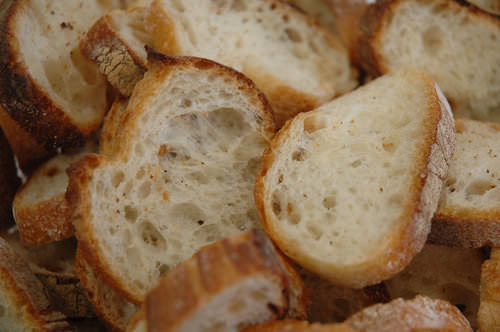4.11 厌氧过程
章节大纲
-
Fast and Furious
::急急急急急急急急急急急急急急急This sprinter's will need a lot of energy to complete her short race, because she will be running at top speed. The action won't last long, but it will be very intense. The energy the sprinter needs can't be provided quickly enough by aerobic . Instead, her muscle must use a different process to power their activity.
::这个短跑者需要很多精力来完成她的短跑, 因为她会以最高速度运行。 动作不会持续很长时间, 但是会非常激烈。 短跑者需要的能量不能用有氧运动来迅速提供。 相反, 她的肌肉必须用不同的过程来激活他们的活动。Making ATP Without Oxygen
::使 ATP 没有氧气Living things' cells power their activities with the energy-carrying molecule ATP (adenosine triphosphate). The cells of most living things make ATP from glucose in the process of cellular respiration. This process occurs in three stages: , the , and . The latter two stages require oxygen, making cellular respiration an aerobic process. There are also ways of making ATP from glucose that are anaerobic , which means that they do not require oxygen. These processes are referred to collectively as .
::活物的细胞用含有能量的分子ATP(乙酸三磷酸酯)进行活动。 大部分活物的细胞在细胞呼吸过程中从葡萄糖中产生ATP。 这个过程分三个阶段进行: 、 和 。 后两个阶段需要氧, 使细胞呼吸产生有氧过程。 还有一些方法可以使含葡萄糖的ATP产生厌氧, 这意味着它们不需要氧。 这些过程被统称为 。Fermentation
::发酵An important way of making ATP without oxygen is fermentation. Fermentation starts with glycolysis, which does not require oxygen, but it does not involve the latter two stages of aerobic cellular respiration (the Krebs cycle and electron transport). There are two types of fermentation: and lactic acid fermentation . We make use of both types of fermentation using other organisms , but only lactic acid fermentation actually takes place inside the .
::在没有氧气的情况下制造ATP的一个重要方法就是发酵。发酵始于液解,不需要氧气,但它不涉及有氧细胞呼吸的后两个阶段(Krebs循环和电子传输),有两种发酵类型:和白酸发酵。我们使用其他生物进行这两种发酵,但实际上只有乳酸发酵发生在体内。Alcoholic Fermentation
::酒精发酵Alcoholic fermentation is carried out by single-celled (called yeasts), as well as some . We use alcoholic fermentation in these organisms to make biofuels, bread, and wine. The biofuel ethanol (a type of alcohol), for example, is produced by alcoholic fermentation of the glucose in corn or other plants. The process by which this happens is summarized in the diagram . The two pyruvic acid molecules shown in the diagram come from the splitting of glucose in the first stage of the process ( glycolysis) . ATP is also made during glycolysis . Two molecules of ATP are produced from each molecule of glucose.
::酒精发酵由单细胞(称为酵母)以及某些人进行。我们使用这些生物中的酒精发酵来制造生物燃料、面包和葡萄酒。例如,生物燃料乙醇(一种酒精)是玉米或其他植物中葡萄糖的酒精发酵产物。这种发酵的过程在图表中作了总结。图表中显示的两种阳性酸分子来自过程第一阶段的葡萄糖分解(水解),在水解过程中还制作了ATP,从每个葡萄糖分子中产生两种ATP分子。
Alcoholic fermentation produces ethanol and NAD+. The NAD+ allows glycolysis to continue making ATP.
::酒精发酵产生乙醇和NAD+。 NAD+允许水解继续生成ATP。Yeasts in bread dough also use alcoholic fermentation for energy. They produce carbon dioxide gas as a waste product. The carbon dioxide released causes bubbles in the dough and explains why the dough rises. Do you see the small holes in the bread pictured ? The holes were formed by bubbles of carbon dioxide gas.
::面包面团中的野兽也使用酒精发酵作为能源。它们生产二氧化碳气体作为废物产品。二氧化碳释放后会给面团带来泡沫,并解释为什么面团会上升。你是否看到面包上的小洞?洞是由二氧化碳气体的泡沫形成的。Holes from carbon dioxide gas in bread dough are left behind after the bread bakes.
::面包面包面包后,面包面团中二氧化碳气体的洞被留下。Lactic Acid Fermentation
::电法酸发酵Lactic acid fermentation is carried out by certain bacteria, including the bacteria in yogurt. It is also carried out by your muscle cells when you work them hard and fast. This is how the muscles of the sprinter pictured get energy for their short-lived — but intense — activity. The process by which this happens is summarized in the diagram . Again, t he two pyruvic acid molecules shown in the diagram come from the splitting of glucose in the first stage of the process ( glycolysis) . It is also during this stage that two ATP molecules are produced. The rest of the processes produce lactic acid. Note that, unlike in alcoholic fermentation, there is no carbon dioxide waste product in lactic acid fermentation.
::包括酸酸细菌在内的某些细菌进行法酸发酵,在酸酸酸发酵时,也由肌肉细胞进行,在肌肉细胞努力和快速地工作时进行。这就是冲锋枪的肌肉如何获得短寿命(但密集)活动的能量。图中总结了发生这种情况的过程。同样,图表中显示的两个阴性酸分子来自过程第一阶段的葡萄糖分解(液解),在这一阶段,还生产了两个ATP分子。其他过程产生液酸。请注意,与酒精发酵不同的是,在酒精发酵中,在酸发酵过程中没有产生二氧化碳废物。
Lactic acid fermentation produces lactic acid and NAD+. The NAD+ cycles back to allow glycolysis to continue so more ATP is made. Each circle represents a carbon atom.
::代用酸发酵产生杀菌酸和NAD+。 NAD+的周期是回转,以便能继续进行水解,从而产生更多的ATP。每个圆圈代表一个碳原子。Did you ever run a race, lift heavy weights, or participate in some other intense activity and notice that your muscles start to feel a burning sensation? This may occur when your muscle cells use lactic acid fermentation to provide ATP for energy. The buildup of lactic acid in the muscles causes a burning feeling . This painful sensation is useful if it gets you to stop overworking your muscles and allow them a recovery period, during which cells can eliminate the lactic acid.
::你是否曾跑过赛跑,举重,或参与过其他激烈的活动,注意到肌肉开始有燃烧的感觉?当肌肉细胞使用抗酸发酵来提供ATP能量时,可能会发生这种情况。肌肉中积聚抗酸会产生一种燃烧的感觉。这种痛苦的感觉非常有用,如果能让你停止过度锻炼肌肉,让肌肉恢复一段时间,让细胞消除抗酸。Pros and Cons of Anaerobic Respiration
::厌氧呼吸的Pros和 ConssWith oxygen, organisms can use aerobic cellular respiration to produce up to 38 molecules of ATP from just one molecule of glucose. Without oxygen, organisms must use anaerobic respiration to produce ATP, and this process produces only two molecules of ATP per molecule of glucose. Although anaerobic respiration produces less ATP, it has the advantage of doing so very quickly. For example, it allows your muscles to get the energy they need for short bursts of intense activity. Aerobic cellular respiration, in contrast, produces ATP more slowly.
::使用氧,有机体可以使用有氧细胞呼吸来从一个甘蔗糖分子中产生多达38个ATP分子。没有氧,有机体必须使用厌氧呼吸来产生ATP,而这一过程只能产生两种ATP分子,每个葡萄糖分子中,ATP分子的ATP呼吸量较少,但ATP呼吸的优势却非常快。例如,它允许你的肌肉获得短距离密集活动所需的能量。相反,有氧细胞呼吸能较慢地产生ATP。Feature: Myth vs. Reality
::特征:神话对现实Myth: No doubt you have participated in strenuous or other intense activity and then felt soreness in your muscles the next day. The soreness may even last for several days after the activity. Many people, even well-seasoned athletes, believe that lactic acid buildup is responsible for this type of delayed muscle soreness.
::传说:毫无疑问,你参与了艰苦或其他紧张的活动,然后第二天又感到肌肉疼痛。 痛苦甚至可能持续了活动之后的几天。 许多人,甚至是时尚良好的运动员,都认为这种迟缓的肌肉疼痛是实验性酸积聚造成的,即使是季节性强的运动员,也认为这种迟缓的肌肉疼痛是实验性酸积聚造成的。Reality: Although lactic acid produced during extreme exertion may result in a burning sensation while the muscles are active, it is not thought to be the cause of muscle soreness afterward. The reason for delayed muscle soreness is not yet well understood, but it may be due to actual injury of the muscles, which causes inflammation, swelling, and pain.
::现实:尽管在极端施用期间产生的乳酸在肌肉活跃时可能导致燃烧的触觉,但人们并不认为它是肌肉后发疼痛的原因。 肌肉迟发疼痛的原因目前还不清楚,但可能是肌肉实际受伤造成的,导致炎症、肿胀和疼痛。Summary
::摘要-
The cells of most living things produce ATP from glucose by aerobic cellular respiration, which uses oxygen. Some organisms instead produce ATP from glucose by anaerobic respiration, which does not require oxygen.
::大多数活物的细胞通过使用氧气的有氧细胞呼吸,从葡萄糖中产生ATP,而有些生物则通过无氧呼吸产生ATP,这不需要氧气。 -
An important way of making ATP without oxygen is fermentation. There are two types of fermentation: alcoholic fermentation and lactic acid fermentation. Both start with glycolysis, the first (anaerobic) stage of cellular respiration, in which two molecules of ATP are produced from one molecule of glucose.
::没有氧气而制造ATP的一个重要方法就是发酵。有两种发酵类型:酒精发酵和酸酸发酵。这两种发酵都以液解作用开始,即细胞呼吸的第一个(厌氧)阶段,在这一阶段,ATP的两个分子从一个葡萄糖分子中产生。 -
Alcoholic fermentation is carried out by single-celled organisms, including yeasts and some bacteria. We use alcoholic fermentation in these organisms to make biofuels, bread, and wine.
::酒精发酵由单细胞生物进行,包括酵母和一些细菌,我们使用这些生物中的酒精发酵来制造生物燃料、面包和葡萄酒。 -
Lactic acid fermentation is undertaken by certain bacteria, including the bacteria in yogurt, and also by our muscle cells when they are worked hard and fast.
::某些细菌,包括酸奶中的细菌,以及我们的肌肉细胞,在努力和快速工作时,进行法酸发酵。 -
Anaerobic respiration produces far less ATP than does aerobic cellular respiration, but it has the advantage of being much faster. For example, it allows muscles to get the energy they need for short bursts of intense activity.
::与有氧细胞呼吸相比,抗氧呼吸的ATP生成量要小得多,但它的优势是速度要快得多。 比如,它允许肌肉获得短距离密集活动所需的能量。
Review
::回顾1. Explain the primary difference between aerobic cellular respiration and anaerobic respiration.
::1. 解释有氧细胞呼吸和厌氧呼吸的主要区别。2. What is fermentation?
::2. 什么是发酵?3. Compare and contrast alcoholic and lactic acid fermentation.
::3. 比较和对比酒精和乳酸发酵。4. Identify the major pro and the major con of anaerobic respiration relative to aerobic cellular respiration.
::4. 确定厌氧呼吸与有氧细胞呼吸的主要利弊。5. What process is shared between aerobic cellular respiration and anaerobic respiration? Describe the process briefly. Why can this process happen in anaerobic respiration, as well as aerobic respiration?
::5. 有氧细胞呼吸和厌氧呼吸之间有哪些共同过程?请简单描述这一过程。为什么这一过程可以在厌氧呼吸和有氧呼吸中发生?6. Which type of respiration occurs in the human body?
::6. 人体发生何种呼吸?a. aerobic cellular respiration
::a. 有氧细胞呼吸b. alcoholic fermentation
::b. 酒精酒精发酵c. lactic acid fermentation
::c. 电酸发酵d. both A and C
::d. A 和 C 两者7. True or False: Lactic acid fermentation produces carbon dioxide.
::7. 真实或假的:低温酸发酵产生二氧化碳。8. True or False: Types of bacteria can carry out alcoholic fermentation and lactic acid fermentation.
::8. 真实或假:细菌类型可以进行酒精发酵和酸酸发酵。9. True or False: No ATP is produced by fermentation.
::9. 真实或假:无自动交换分解法通过发酵产生。10. Both lactic acid fermentation and alcoholic fermentation use _________ acid molecules to make their final products.
::10. 乳酸发酵和酒精发酵均使用酸分子制作最终产品。11. Which type of respiration is used in the production of bread and wine?
::11. 哪种呼吸用于面包和葡萄酒的生产?a. alcoholic fermentation
::a. 酒精发酵b. lactic acid fermentation
::b. 电酸发酵c. aerobic cellular respiration
::c. 有氧细胞呼吸d. prokaryotic respiration
::d. 原牙呼吸12. Is fermentation an aerobic or anaerobic process?
::12. 发酵是有氧过程还是厌氧过程?13. What is the reactant (or starting material) common to aerobic respiration and both types of fermentation?
::13. 有氧呼吸和两种发酵类型的反应器(或起动材料)具有什么共通性?Explore More
::探索更多Check out this video to learn more about anaerobic glycolysis:
::校对:Portnoy 校对:PortnoyWhile many people think that b rewers are artisans for their production of beer, in actuality, the true craft and process of beer making is due to anaerobic glycolysis from yeast. Learn more here:
::虽然许多人认为酿酒者是制作啤酒的工匠,但实际上,真正的啤酒制造工艺和过程,是由于酵母的厌氧甘凝解。 -
The cells of most living things produce ATP from glucose by aerobic cellular respiration, which uses oxygen. Some organisms instead produce ATP from glucose by anaerobic respiration, which does not require oxygen.

